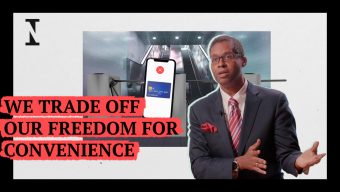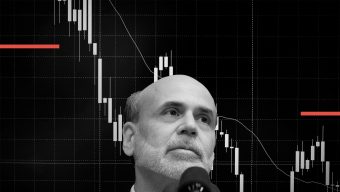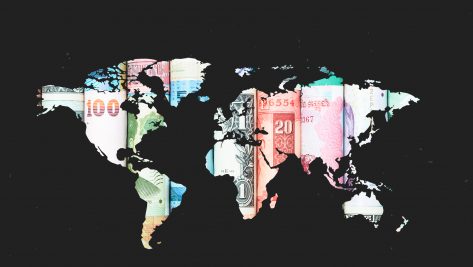Business management and investment location are key to the success of international expansions, requiring managers to analyze in depth the various options for where and how to enter markets, assessing the benefits and risks. Establishing a network of overseas subsidiaries allows multinationals to leverage their vast global reach in order to quickly access different markets and exploit their expertise on the ground to identify new ideas or products used by rivals in other parts of the world. Additionally, the advantage of being a multinational is shifting from the mere ownership of various unconnected international subsidiaries to the ability to access and truly integrate this expertise in the field.
The prevailing approach, which has yielded good results, is to pursue a systematic, gradual internationalization (moving from low to high commitment and risk over time) with a view to accessing larger markets, increasing return on investment, and developing economies of scale and learning, while at the same time facilitating innovation. In the last twenty years, foreign direct investment has increased in both developed and emerging countries, and it seems likely to continue to grow. However, the impact of entering a foreign market will differ if it is done through licensing or a direct investment or acquisition. All else being equal, companies generally prefer joint ventures or partnerships when investing in uncertain environments and outright purchases in all other cases.
Countries differ in terms of the characteristics of their business systems, specifically in their economic, financial, and administrative practices. These differences stem from their demographic, geographic, and cultural idiosyncrasies and their different political institutions. In countries where the political risk is higher, buyers may find it harder than expected to enforce contractual obligations. There are several ways to measure the stability of a host country’s political environment. The International Country-Risk Guide (ICRG) has developed a longitudinal comparative measure of the level of political risk of each country. The political constraint index POLCON likewise reflects various features of the environment, including political and social singularities.
The impact of entering a foreign market will differ if it is done through licensing or a direct investment or acquisition.
Entry barriers
With regard to administrative and legal characteristics, a country’s institutions can create entry barriers such as legal restrictions on ownership, a formula used by host countries to protect domestic ownership. Strategically, companies choose markets with less institutional uncertainty, which they can enter using forms of full ownership, such as acquisitions or investments in new facilities.
In contrast, companies generally limit ownership in countries that are culturally different from their own. Cultural characteristics are usually measured with a system developed in 1985 by the Dutch social psychologist Hofstede. Another alternative is the Global Leadership and Organizational Behavior Effectiveness (GLOBE) study, carried out in the late 1990s, which, although more comprehensive, nevertheless suffers from the same problems of one-dimensionality and representativeness.
Another increasingly important factor is a country’s connectivity, a variable that reflects the capacity of resident individuals and companies to interact with other parts of the world, obtain information, and disseminate their own activities. An international database that takes these different dimensions into account is available on the Wharton Business School website (http://lauder.wharton.upenn.edu/ciber/faculty_research.asp).
The overseas expansion of the Spanish discount supermarket chain DIA illustrates why the specific features of the host country matter when deciding how and where to invest. DIA began its international expansion in the 1990s in Europe. In the 2000s, it entered Latin America, using a classic franchise model, mainly in cities. With this experience under its belt, DIA opened its first store in Brazil, a country that posed significant challenges, including different demographics from Spain’s and the purchasing power of prospective customers. Brazilians are used to shopping at the country’s thousands of informal retailers, and they tend to do their shopping on foot once a day. However, DIA adapted to the specific characteristics of the Brazilian market, making its stores similar in scale to the country’s traditional establishments, and it soon had 230 outlets across Brazil. Most of the establishments were opened in areas between the city and the poorer neighborhoods, and the key to DIA’s success in Brazil was the opportunity it offered to local entrepreneurs to become businessmen and women associated with a strong brand.
Strategically, companies choose markets with less institutional uncertainty, which they can enter using forms of full ownership, such as acquisitions or investments in new facilities.
Business management
The choice of an entry strategy in a new country can lay the groundwork for a successful or disastrous experience, and important lessons have been learned in this field. Based on our experience with multinationals and our research on their global investments in the past thirty years, we have developed guidelines to assist managers, consultants, and policymakers in planning, managing, and evaluating foreign investments.
Companies often become involved in acquisitions without first asking whether they have the experience or capabilities to make them in a way that is cost-effective and efficient. They are likewise often lured by the tax benefits offered by a local government to launch an operation to build new facilities in another country. Both experiences tend to be short-lived. It is thus advisable to follow a more systematic strategy, whereby the company moves abroad using a low-commitment/low-risk mode of entry (e.g., exports) and gradually shifts to modes involving higher degrees of commitment and risk, such as a wholly owned subsidiary, which tends to be more sustainable and profitable in the long term.
Cemex, the global Mexican cement giant, began to export well before it owned production facilities around the world. Only after accumulating experience in this way did it develop an international investment strategy. A similar pattern can be seen in the internationalization of Gerdau, the Brazilian steelmaker.
Exporting should be the first step before internationalization through direct investment. Companies that have successfully used low-commitment, low-risk modes of entry learn from these experiences and develop the necessary skills to engage in more complex and riskier operations, involving new facilities or acquisitions abroad. Investment modes of entry offer several advantages: they provide knowledge of local markets, distribution channels, and clients. This allows companies to appropriate specialized skills from the local market, minimizing the risk of disseminating knowledge, and, ultimately, be seen as companies from the country. This is the case of Nestlé, which, in Brazil, is generally regarded as a Brazilian company, given its many production facilities and long local history.
Investment modes of entries can be an important means of maintaining and creating a competitive advantage in a foreign country, but they are not for beginners. Most companies usually have to try out other types of landings before they acquire the know-how and skills needed to invest. No matter how expert a company may be in “nearby” countries, when it ventures into markets substantially different from its own, it becomes a novice.
Companies that have successfully used low-commitment, low-risk modes of entry learn from these experiences and develop the necessary skills to engage in riskier operations.
Monitoring the competition
Successful companies tend to begin the internationalization process choosing modes of entry involving low commitment and little risk in relatively nearby countries. A Spanish multinational with various subsidiaries in Latin America should not assume it has the necessary capacity to enter markets in Asia with the same high-commitment, high-risk modes of entry (acquisition or wholly owned subsidiaries) that is uses in, for example, Colombia. Witness the case of the Mexican group Elektra, one of the largest specialty retailers in Latin America. Following its successful expansion to countries such as Guatemala, El Salvador, Honduras, and Peru, we asked its CEO, Carlos Septién, about his experience entering Brazil. He acknowledged that they had had to start from scratch.
Another factor to consider is the signal that the choice of a mode of entry sends to companies competing in the target market. In addition, selecting a high-commitment, high-risk mode of management is rather like “burning bridges” (i.e., withdrawal is no longer an option). Companies must thus be prepared to deal with the reprisals of companies from the host country.
Although the predominant view has long been that a systematic and gradual internationalization process (one that moves from low to high commitment and risk over time) is the way to go, and that caution must be exercised when choosing how to enter “distant” countries, a new generation of multinational companies from emerging countries, especially China, is breaking the rules. Companies such as Haier and Huawei have traded in the gradual strategy for an accelerated one, entering foreign markets through acquisitions in both near and distant markets at the same time, ignoring the standard recommendations.
References
Blake, D. & Moschieri, C. (2016). Policy Risk, Strategic Decisions, and Contagion Effects: Firm-Specific Considerations. Strategic Management Journal, forthcoming.
Moschieri, C. & Monteiro, F. (2014). Qué debería preguntarse antes de decidir internacionalizarse y cómo hacerlo. Harvard Deusto Business Review, 239, 44-54.
Useful links
Economic and financial features: WDI (1960-2013) / http://data.worldbank.org/country
Country risk ratings: Euromonitor (1996-to date) / http://www.euromoney.com/Poll/10683/PollsAndAwards/Country-Risk.html
Political features: WTO (1980-to date) / https://www.prsgroup.com/about-us/our-two-methodologies/icrg
Administrative features: CIA Factbook (Constant) / https://www.cia.gov/library/publications/the-world-factbook/index.html
Cultural features: WVS (1980-2014) / http://www.worldvaluessurvey.org/wvs.jsp
© IE Insights.











